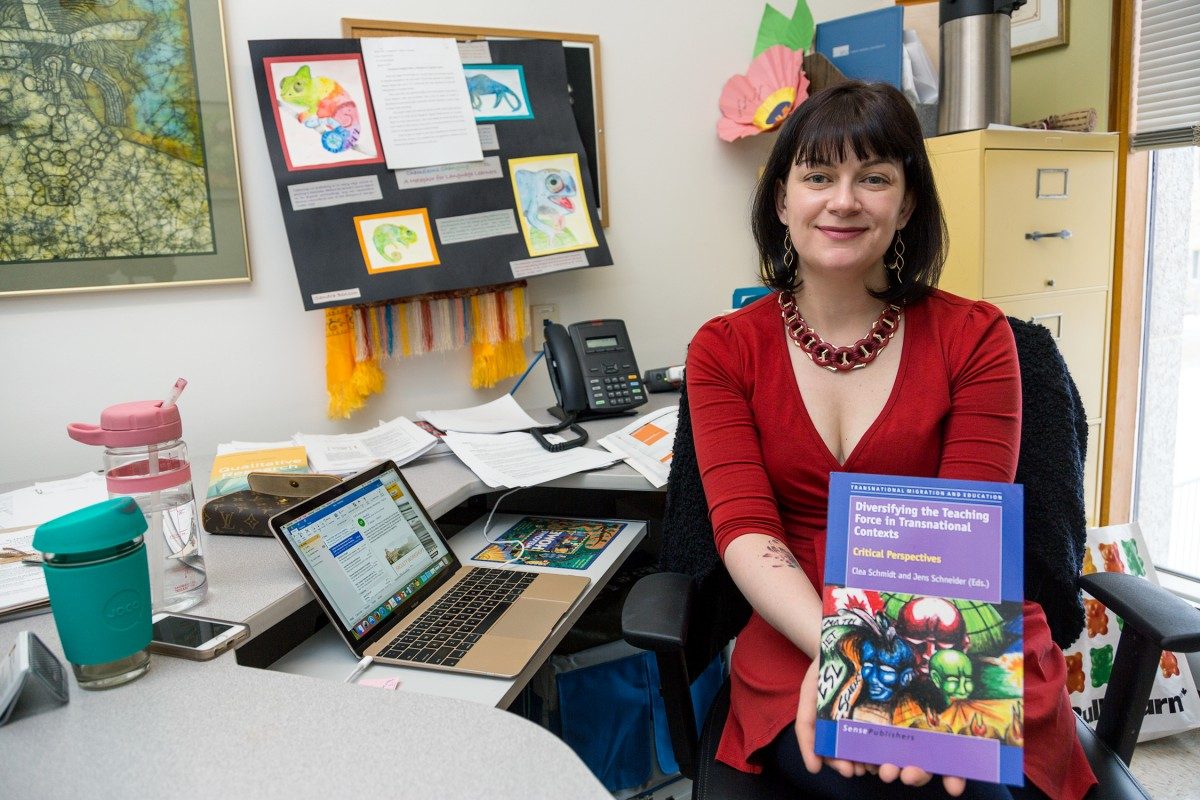
Education prof’s book argues for diversifying teacher workforce
With refugee numbers worldwide reaching historic levels—the Syrian crisis compounded by displacements from Afghanistan, Central African Republic, Eritrea, Libya and Yemen—Associate Professor Clea Schmidt says more than ever, the demographics of the teaching profession need to change to better reflect those of the students they teach.
“Most of the teaching force remains predominantly white, mono-lingual speakers of the national language—often predominantly Christian and predominantly female. And then you’ve got very ethnically, linguistically, culturally diverse students and families,” Schmidt says.
In a new volume called, “Diversifying the Teaching Force in Transnational Contexts,” (Sense Publishers, 2016), Schmidt and co-editor Jens Schneider of University of Osnabrück, Germany, make the case for diversifying the teacher force in Western schools.
For Schmidt, diversity in the teaching profession has been a focus of her research for some 12 years. The CTL professor says the book came together by connecting with like-minded colleagues, many of whom she’s collaborated with on conference presentations. In all, 24 international education scholars from countries including the United States, Germany, Ireland, Scotland and England submitted chapters to collection. Local authors include NCTR education lead, Charlene Bearhead, who wrote the book’s forward, and fellow University of Manitoba education professor, Robert Mizzi, who submitted a chapter on issues facing gay, immigrant adult education teachers in Toronto.
“The goal with this volume was to highlight some of the systemic barriers across contexts, but also to put forward arguments for what we can do about it, and really explore possibilities,” Schmidt says, adding that, despite the variety of cultural contexts included throughout the book, minorities face many similar issues around the world.
She points international teaching experience not being recognized by Canadian certification boards.
“You come to Canada with 30 years teaching experience from your home country and start out at the lowest possible salary classification in the teaching profession,” Schmidt says.
In Norway, as another example, migrants have little chance of instructing classes, because teachers have to share the mother-tongue of students.
Although arguments for teacher diversity are often couched in terms of increasing the representation of minorities in the teaching profession to provide students with positive role models, Schmidt’s book explores other issues affecting diversity among the teaching profession, including systematic discrimination, an oversupply of teachers, and dated hiring practices and policies.
Featuring original research, the book’s authors find that often migrant teachers possess exceptional qualifications in education and experience and bring an international worldview to the role of teacher, benefitting all students.
“The idea behind diversifying the teacher workforce is that you’re contributing to a broader range of perspectives and a broader range of people with different backgrounds who can connect with a wider group of students because we know that having solely a white teaching force—mono-lingual, English-speaking, female, middle-class teaching force can leave some students feeling disconnected from the system,” Schmidt says. “They feel like they’ve never seen a teacher who looks like them, or speaks like them, or who has had the same kinds of experiences. They feel marginalized on that account.”
All children benefit from a diversity of perspectives in classrooms, Schmidt says.
“When you connect children to different worldviews, different ways of knowing and perspectives, this an important aspect of preparing children for a global world.”






